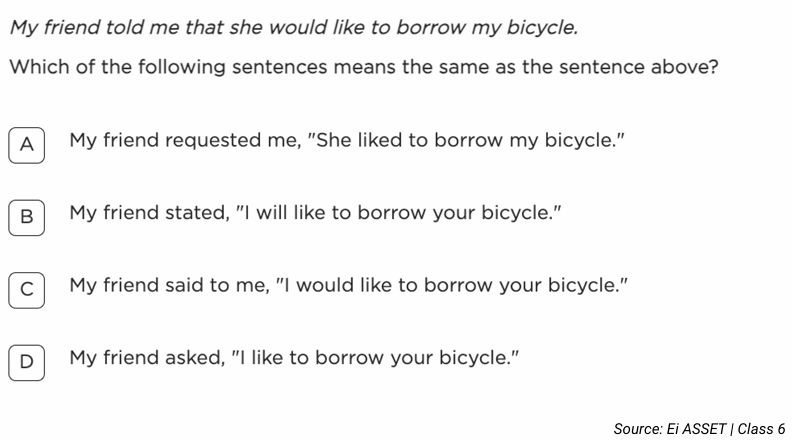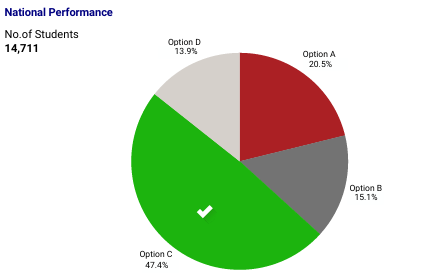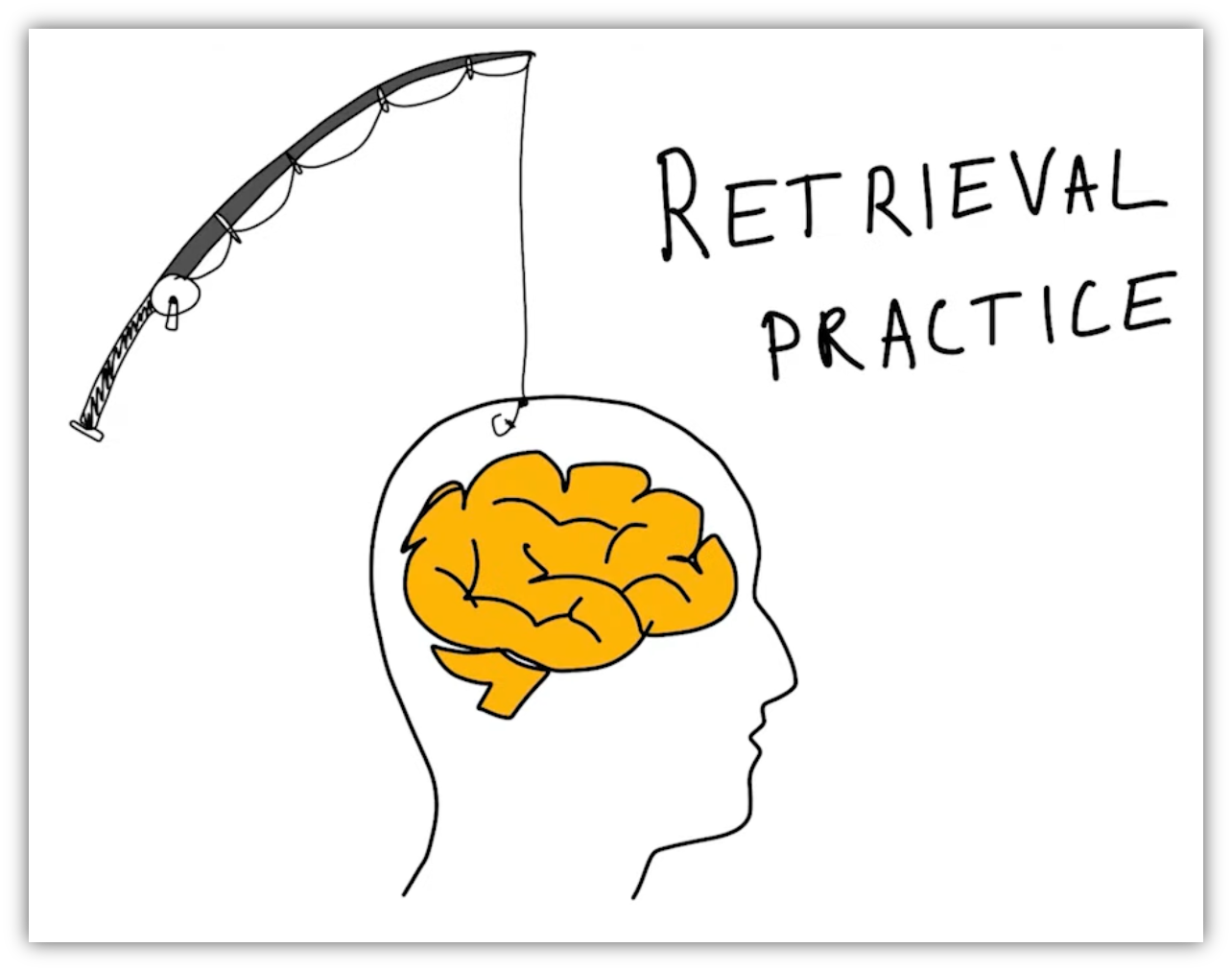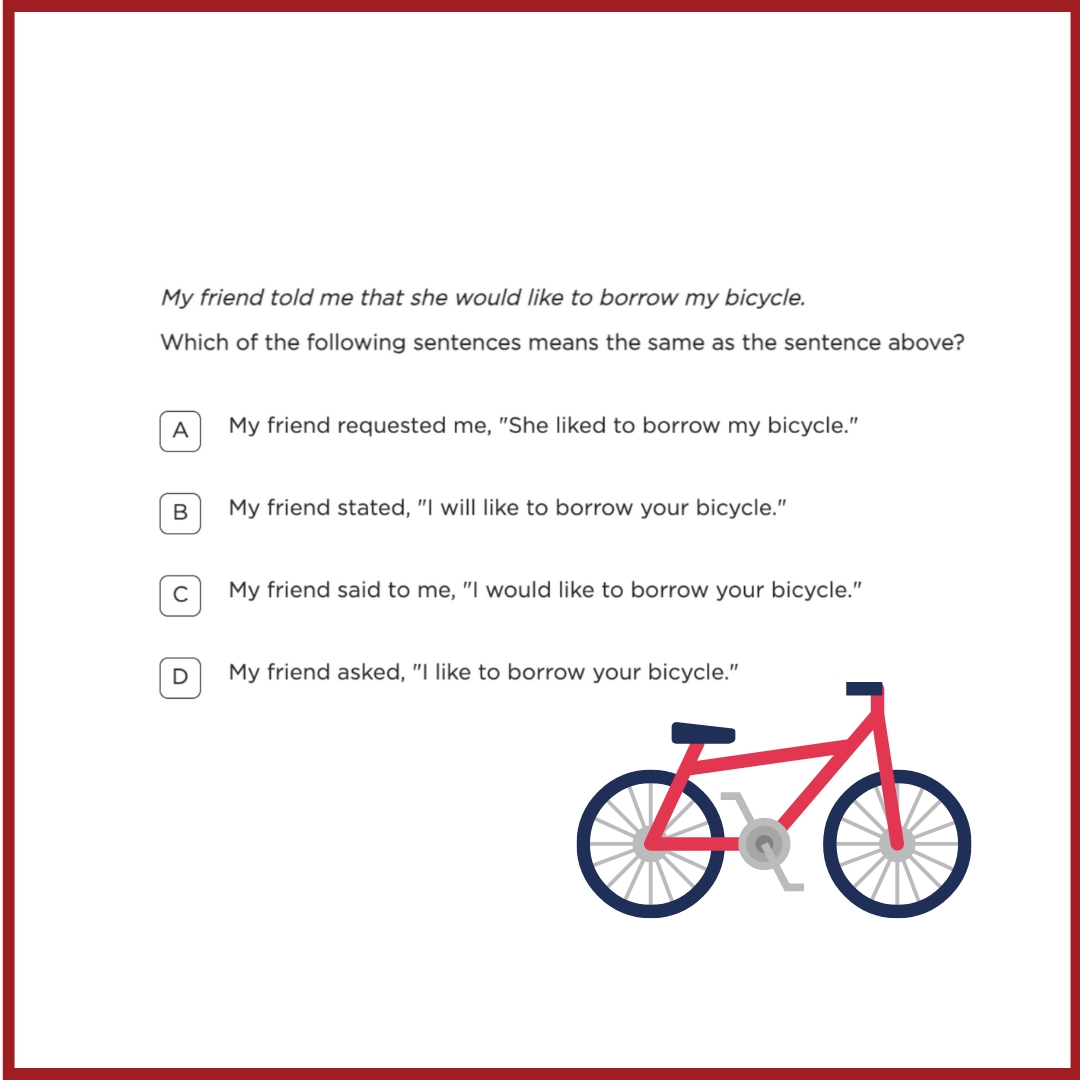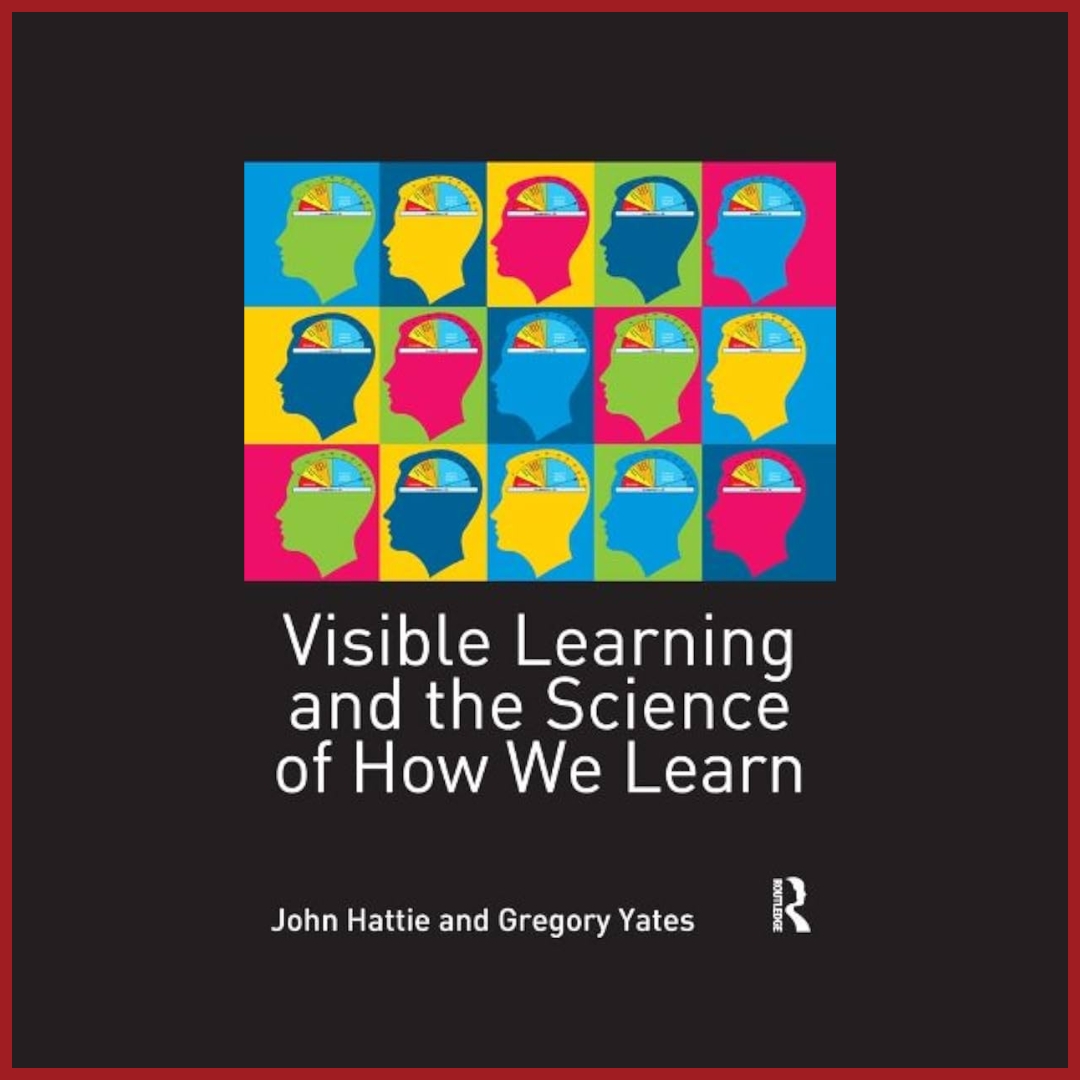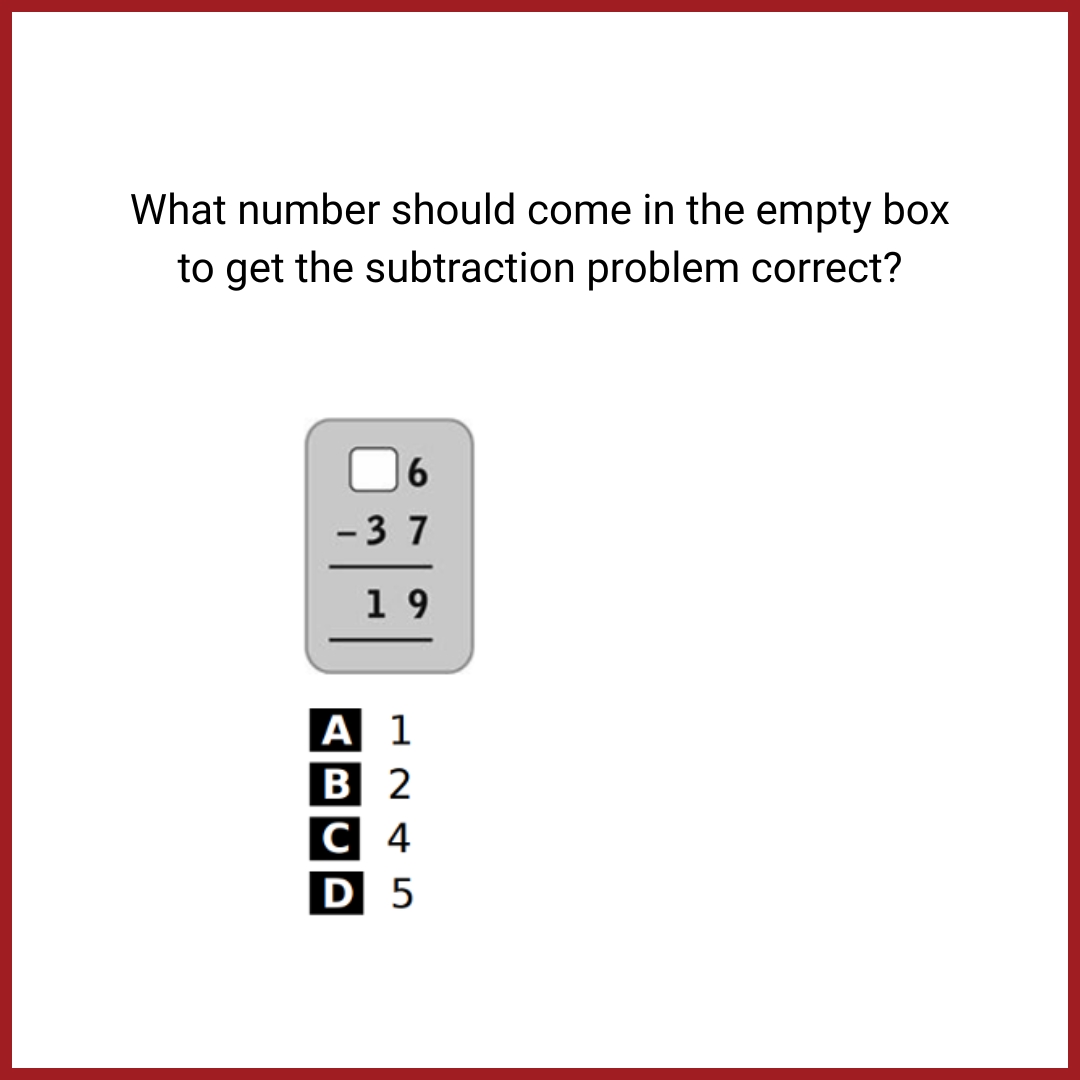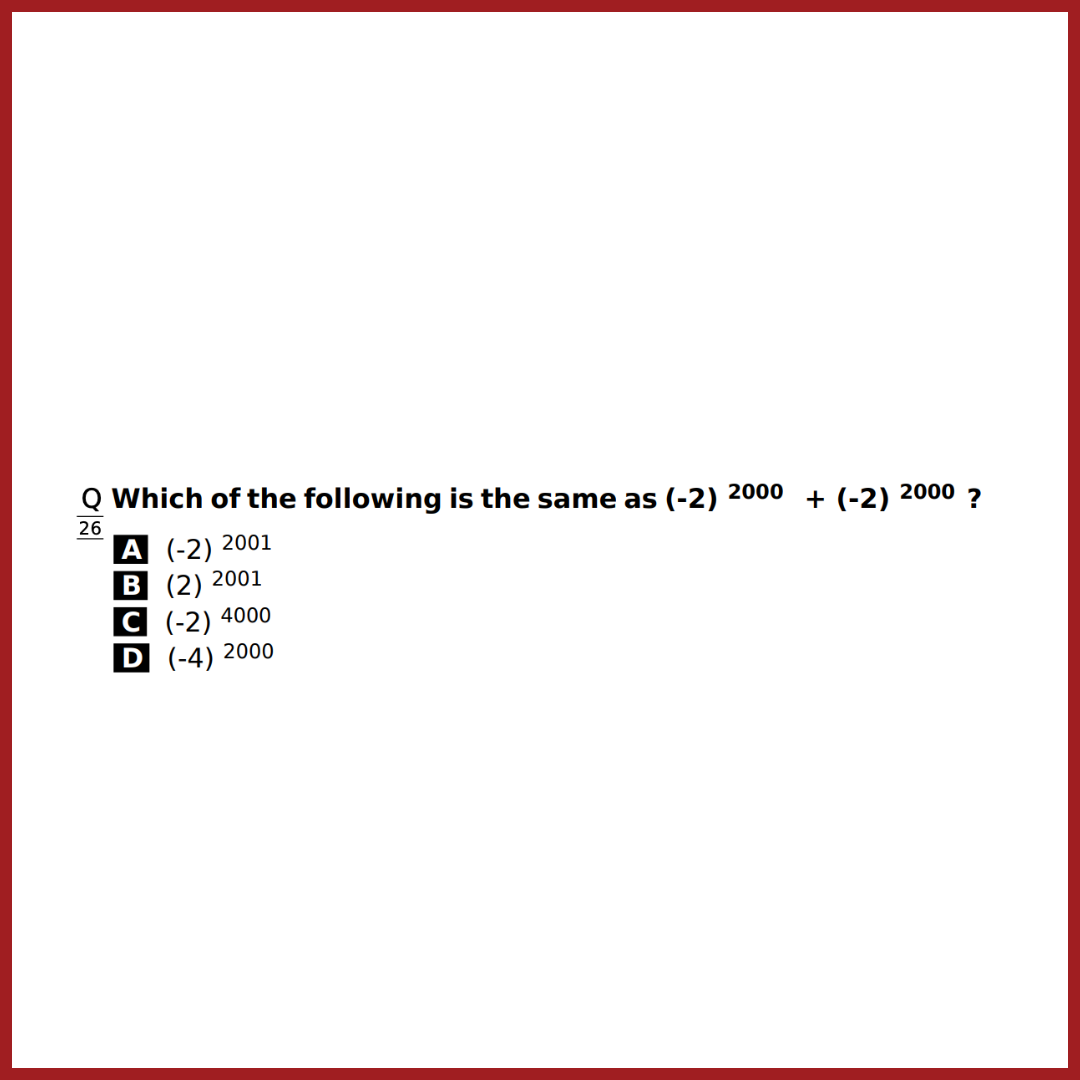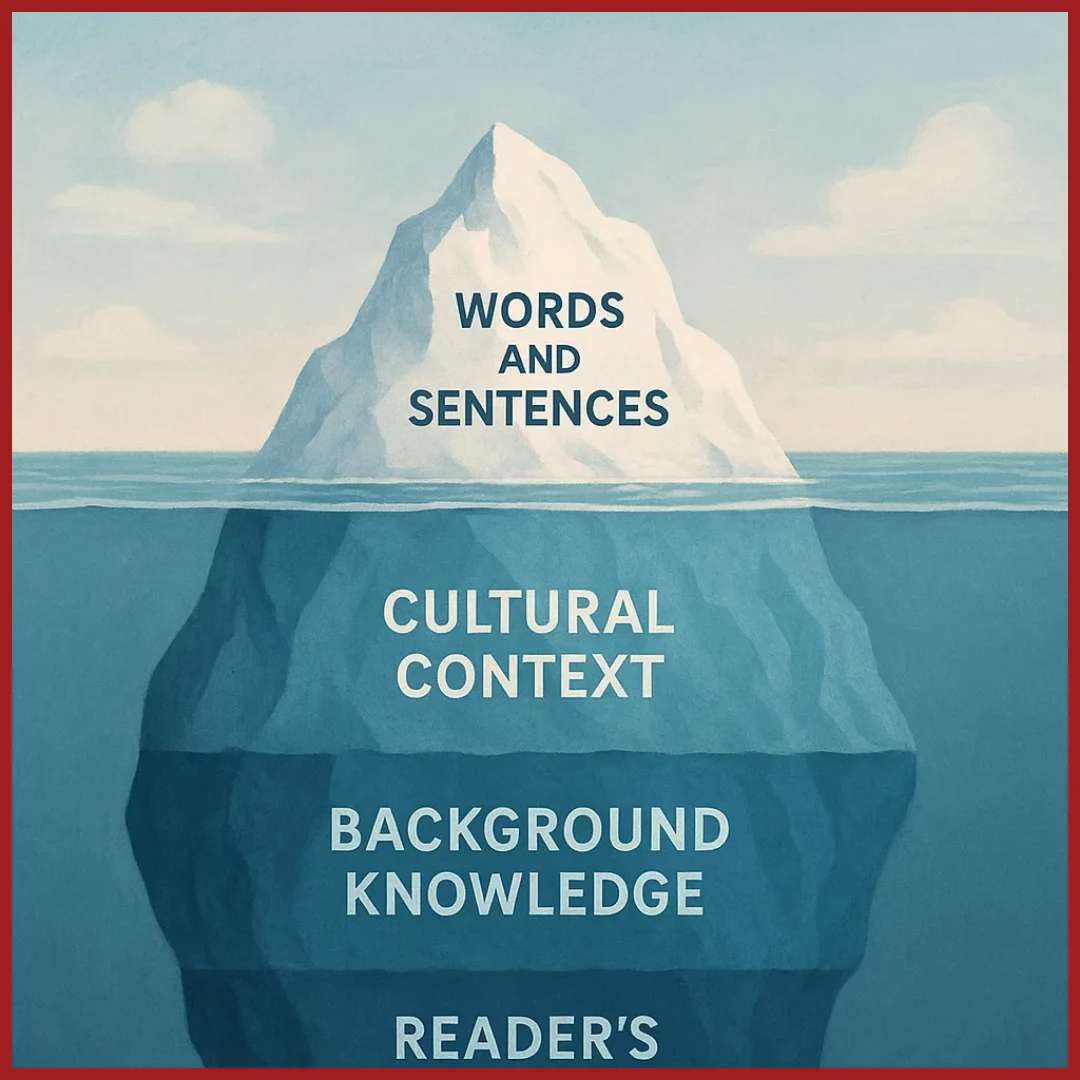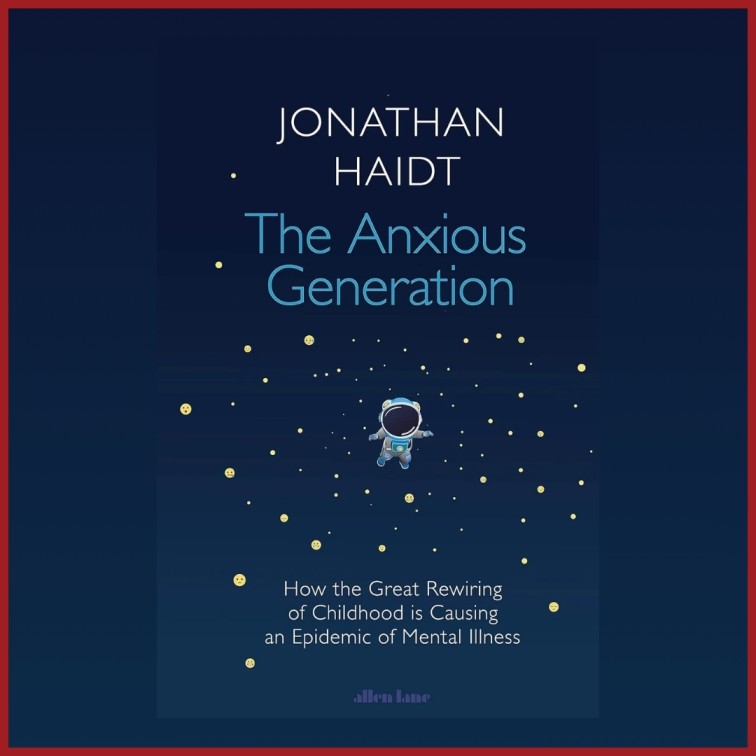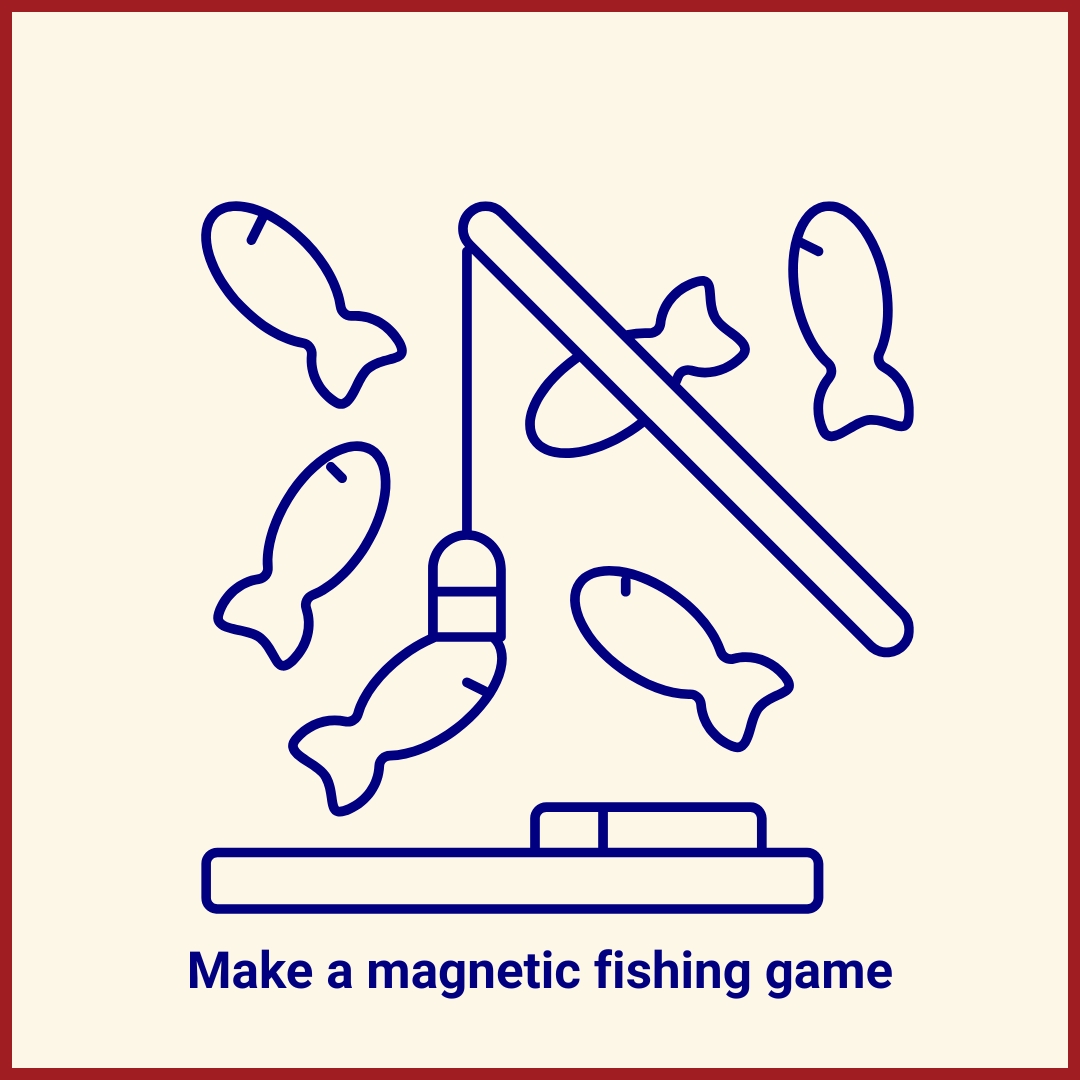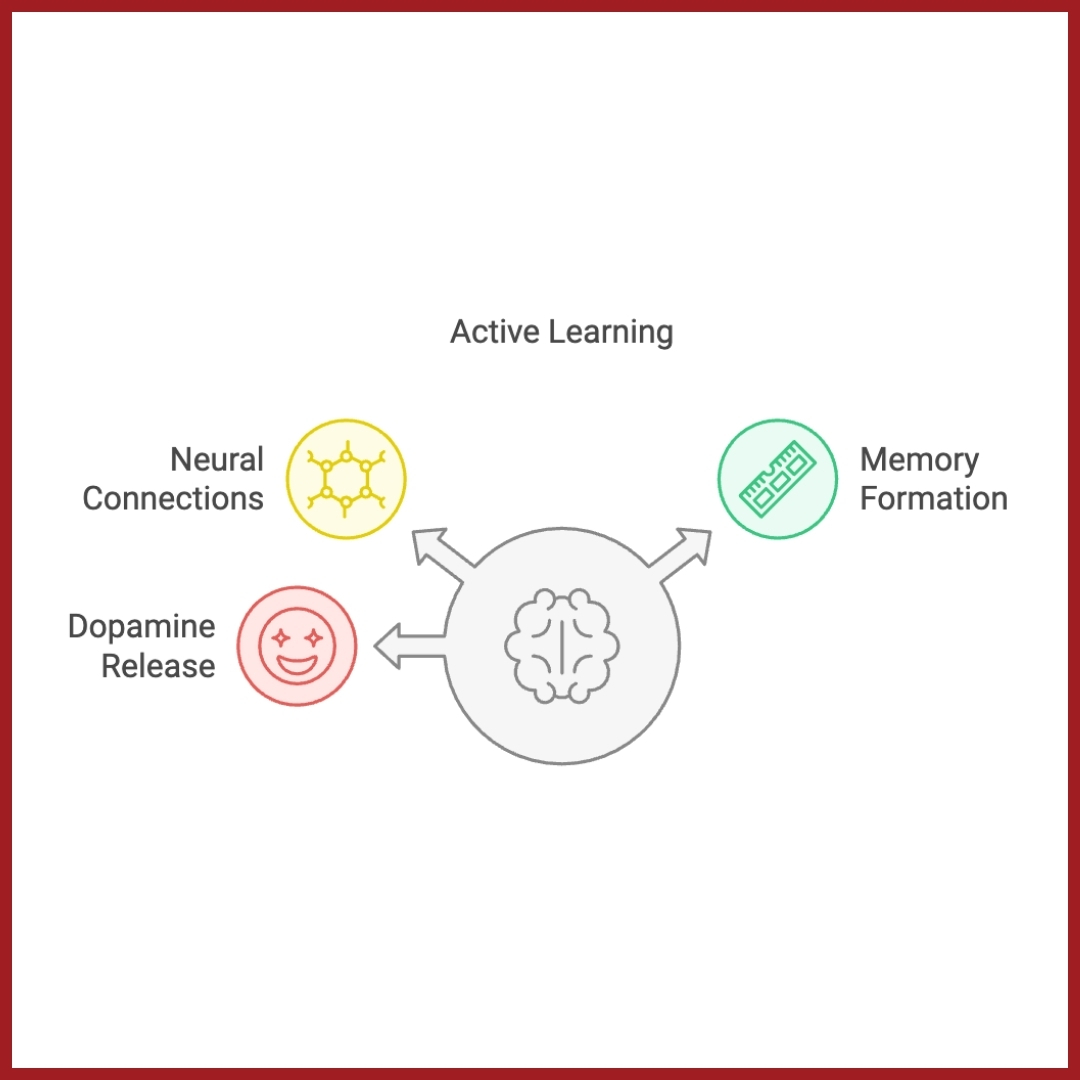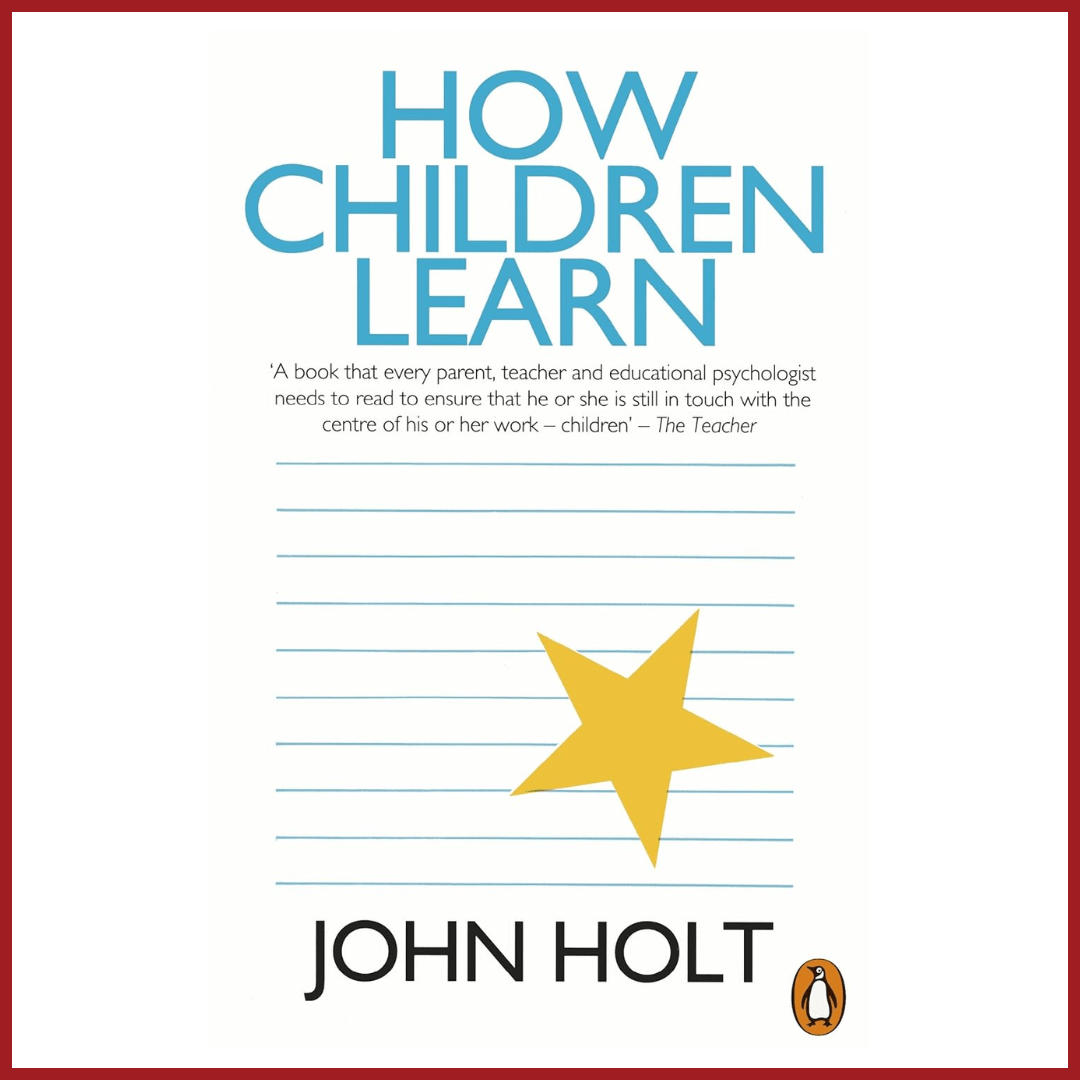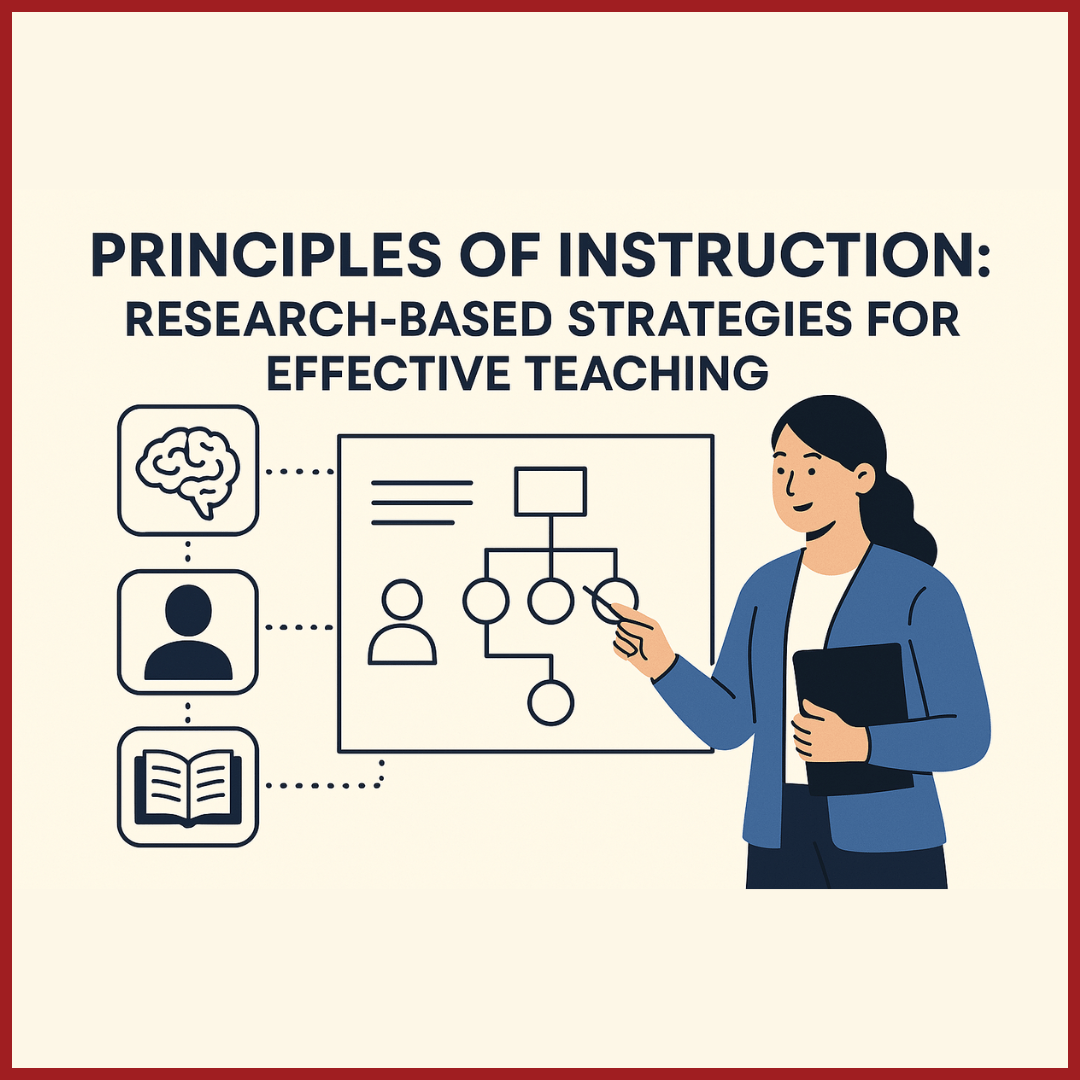Edition 10 | October 2025
From Learning Data to Classroom Instruction
Explore how data-driven insights can transform teaching by addressing
misconceptions and fostering deeper understanding.
What is the Question Testing?
This question assesses whether students can IDENTIFY a sentence that has been transformed
from reported speech to direct speech. Specifically, it checks if learners can recognise that the
sentence ‘My friend told me that she would like to borrow my bicycle’ is best re-expressed as My
friend said to me, “I would like to borrow your bicycle.”
The skill requires three things:
The skill requires three things:
- the pronoun reference changes from ‘my bicycle’ becomes ‘your bicycle’.
- third person becomes first person reference (‘she would like’ to ‘I would like’)
What is the Most Common Wrong Answer and Possible Misconception?
- Most Common Wrong Answer: Option A
- Percentage of Students Choosing Option A: 20.5%
Distractor Explanation :
- Students choosing Option A failed to change the third person ‘she’ to first person ‘I’
- Students choosing Option B Incorrectly changed ‘would like’ to ‘will like’, which is grammatically awkward; ‘Will like’ suggests a future enjoyment rather than a present desire.
- Students choosing Option D they simplified ‘would like’ to just ‘like’ changing the tone from a polite conditional request to a statement of preference.
Consequences of Children Not Developing This Concept
- Weak grammatical foundation: Errors in reported speech affect the accuracy of both written and spoken communication.
- Impact on academic writing: Students will struggle with formal writing tasks (letters, dialogue writing, comprehension responses) where reported speech is frequently required.
- Long-term implications: Persistent mistakes in handling tense, pronouns, and reporting verbs hinder progress in advanced grammar, narrative writing, and integrated grammar tasks in higher classes.
How Should I Remediate This in My Class?
Concrete Demonstrations:
- Shine a torch on a smooth mirror versus a rough wall. Show that on the mirror, rays reflect in one direction, while on the wall, they scatter. Then emphasise: at each point, the law still holds.
- Use a cricket ball analogy: on a flat pitch, the ball bounces predictably; on uneven ground, it scatters—but each bounce still obeys the laws of motion.
- Keep repeating the idea: Angle of incidence = Angle of reflection, always.
- Contrast regular reflection with diffused reflection using side-by-side diagrams, highlighting that surface irregularity changes directions, not the law.
- Pose the question: Does roughness cancel the law, or just change the direction of rays?
- Encourage students to explain in their own words why scattering happens, but the principle remains intact.
Teacher Takeaway:
This item shows that many learners misapply rules of tense, pronoun shifts and reporting verbs in reported speech. The remedy is consistent modelling, guided practice, and deliberate correction of misconceptions. When taught systematically, students develop precision in reported speech, which strengthens both grammar and overall communicative competence.Enjoyed the read? Spread the word
Interested in being featured in our newsletter?
Check out the latest edition here.
Feature Articles
Join Our Newsletter
Your monthly dose of education insights and innovations delivered to your inbox!
powered by Advanced iFrame

